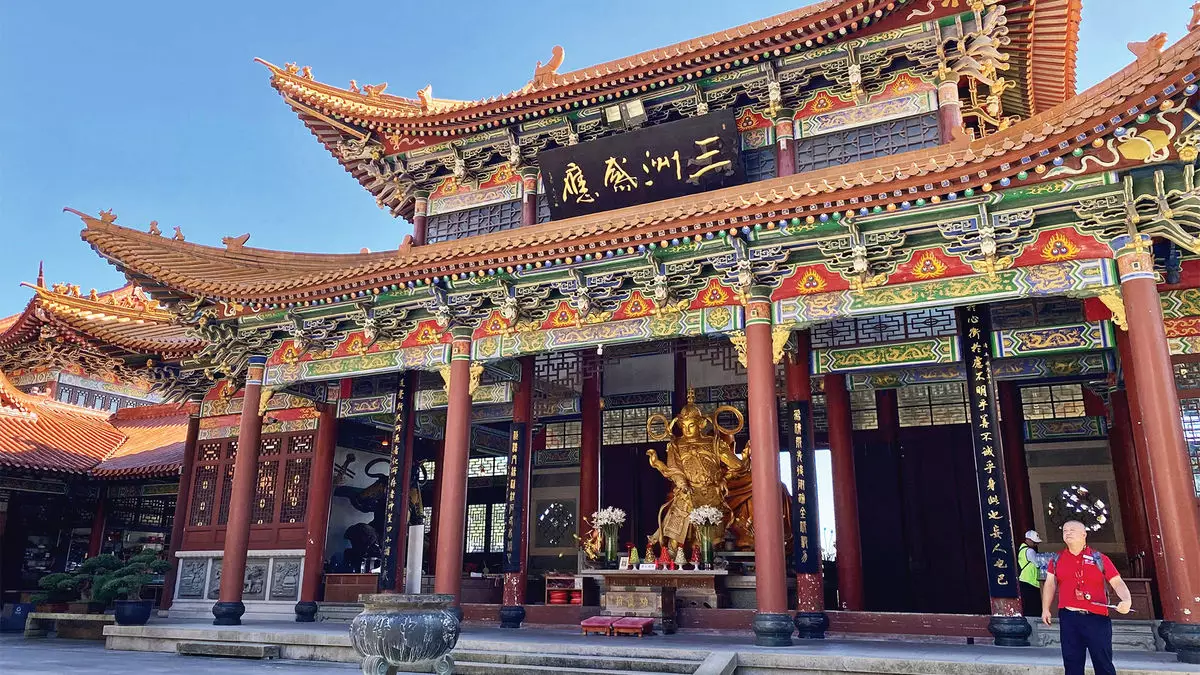Traveling across multiple time zones can often feel like stepping into a dimension where time behaves erratically. This sentiment rang true for me during my adventures in the American Southwest, where the loose grip on my temporal awareness revealed the chaotic nature of travel. Fast-forward to the present, where I find myself regularly traversing skies aboard airplanes, catalyzing an entirely new kind of confusion related to time. This constant shifting in temporal experience has become synonymous with the term “jet lag,” a term I became familiarized with during my recent travel to China for a Viking cruise. In an effort to mitigate the exhaustion that follows such journeys, I turned to an innovative app called Timeshifter.
Jet lag is a complex challenge that disrupts our biological systems as we transition through varying time zones. Our circadian rhythm — the 24-hour internal clock regulating our sleep, wakefulness, mood, and organ function — takes a serious hit when we hastily adjust our location. Scientific evidence supports that slight shifts in our biological systems can lead to numerous issues, including impaired cognitive performance, mood disturbances, and negative physical effects such as compromised digestion and cardiovascular health. My accumulated experiences, such as delayed melatonin production and bodily temperature inconsistencies, left me on a quest for a permanent solution to this disorienting aftermath of travel.
A friend introduced me to Timeshifter, an application designed to help travelers reconcile their circadian clocks. This app promises to analyze individual flight details and provide tailored guidance on how to adjust light exposure and caffeine consumption strategically. Intrigued by its reputed effectiveness, I decided to experiment with the app ahead of my journey from Chicago to Shanghai and back to Vancouver. Upon entering my flight details, Timeshifter generated a user-friendly plan that dictated when to embrace light and when to limit exposure, as well as optimal sleep and caffeine intake times.
This preparatory phase challenged me to alter my behavior, asking for dedication to methods that felt unusual, such as wearing sunglasses indoors and abiding by new light schedules. Despite my initial reluctance, I committed to the routine with a mix of humor and seriousness.
As I embarked on my trip, the app began sending me important notifications, reminding me of my light exposure goals, caffeine timing, and sleep intervals. Remarkably, when I landed in Shanghai, the unfamiliar city felt surprisingly manageable; my energy levels were stable, and my body seemed to fall into the new local routine more seamlessly than anticipated. This success prompted excursions through the city, allowing me to appreciate the vibrant life around me without being hindered by fatigue.
A particular highlight was attending a thrilling acrobatic performance in Shanghai, something I might have missed had I succumbed to jet lag. Adhering to Timeshifter’s recommendations appeared to unlock a fuller travel experience.
As I journeyed back to North America, my faith in Timeshifter grew stronger. The app continued to provide timely reminders about managing light exposure and caffeine during my flight. A crucial espresso fueled the rest of my day upon arriving in Vancouver, lending me newfound vigor to explore before boarding my next cruise. Yet, as I navigated my adventure back home, I found myself forsaking the app’s guidance and slid back into the habits that had previously derailed my adjustments. I believed my struggles were over, yet I was mistaken.
Upon finally returning home, I realized my body had yet again misaligned with my regular schedule. Without the app’s direction for my final travels back to the Central time zone, the familiar ebb and flow of jet lag returned, leaving me feeling foggy and drained. While Timeshifter had undeniably aided my journey while I utilized its resources, my inconsistency with the final leg of my trip resulted in a regression to fatigue and imbalance.
In retrospect, my experience with Timeshifter highlighted the significance of consistency in managing jet lag. The outcomes of my trip reinforced the notion that diligent planning, including utilizing digital tools, can profoundly impact travel experiences. While I may have paid the price for neglecting the last phase of my circadian adjustment, the effectiveness of Timeshifter is a wealth of knowledge I intend to capitalize on during my next adventure. With a yearly subscription on the horizon, I am eager to commit fully to its wisdom, aiming to master the art of time travel once more.

